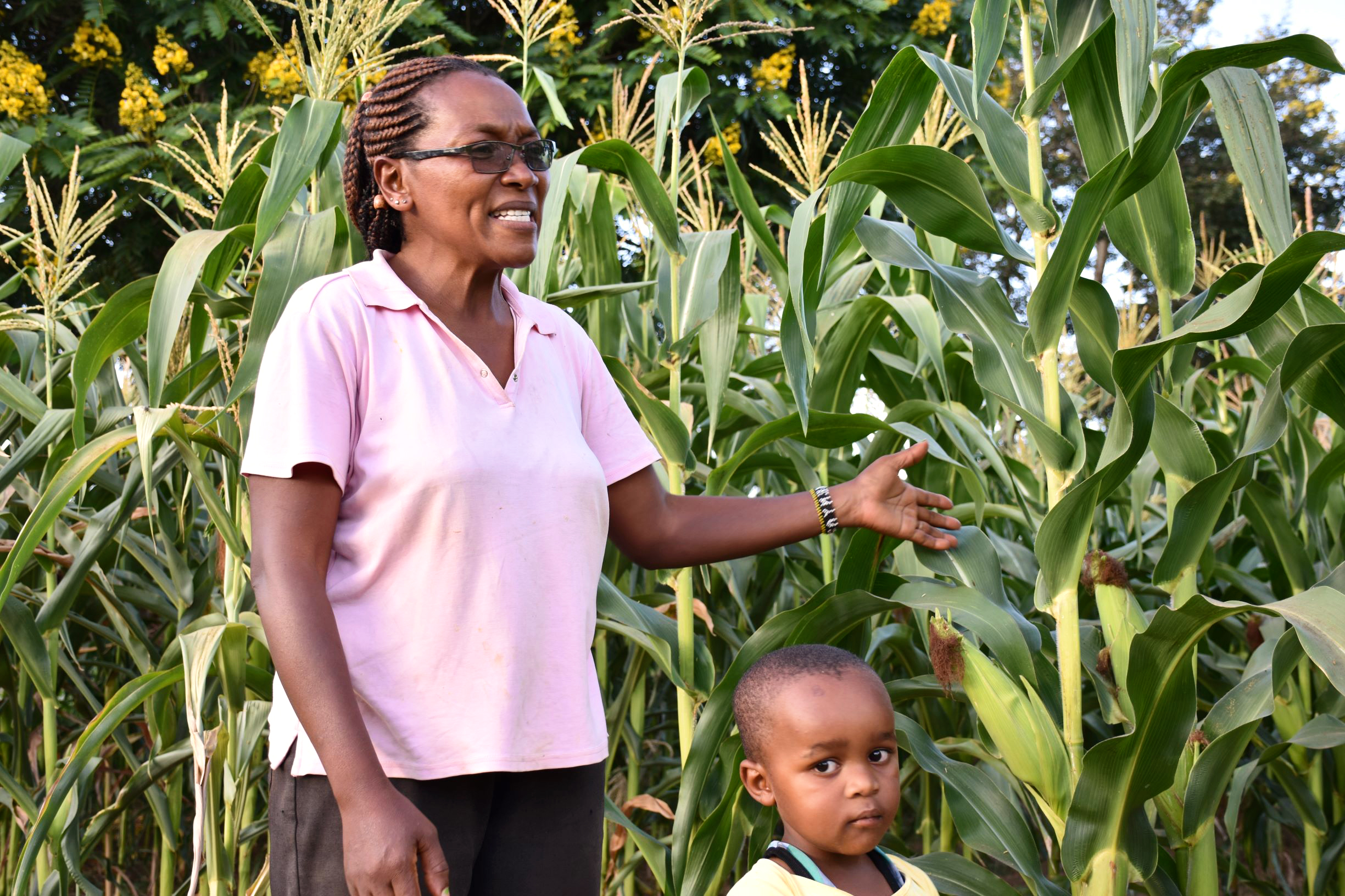How hybrid maize helps farmers get through dry spells


Doris Monica Muia
Maize farmer
Machakos, Kenya
This story is one of a series about how hidden innovations produce the foods we eat at the prices we pay. It has been edited for length and clarity. As told to Krithika Varagur.
I’ve been a farmer for six years, mainly of maize, but also coffee and sweet potatoes. Two years ago, I started using a hybrid maize seed called SAWA, which was developed specifically for drought-like conditions by scientists from the International Maize and Wheat Improvement Center (CIMMYT), based in Mexico. It was first donated to me as a sample by Dryland Seed Limited, a local seed company, and now it’s very popular, so a lot of us here buy it ourselves. This hybrid is better than the traditional varieties, no doubt; it’s a better seed and yields a bigger crop. The taste is different too—it’s a little sweeter. We eat a lot of maize in Kenya; it’s our staple food, especially as ugali, a maize flour porridge.
We have two harvest seasons. October to December is the main one, and the minor one is February to April. If you come here in July or August, it is a very bad place to be. It’s so hot. With this hybrid, even when we have small rains, the maize is very good. And they don’t get so affected by the sun. The new variety has fewer diseases, including northern corn leaf blight, gray leaf spot, maize streak virus, and maize lethal necrosis, a viral disease that was a big problem for us when it broke out in 2011.
It’s early October and I am clearing the farm right now, and putting in manure from the cows. I am standing by, buying more seeds, and waiting for the rain. The selling price the government sets for maize is still not very good, unfortunately. But I still have more crops than some of my neighbors, who sometimes recycle seeds and don’t have very much at all. With ordinary seeds, you have to take much more care of them for much less product. And none of us can really afford other inputs like fertilizer, so any other ways to make our land more productive is good.
Keep Reading
Most Popular
Ethically sourced “spare” human bodies could revolutionize medicine
Human “bodyoids” could reduce animal testing, improve drug development, and alleviate organ shortages.
Everyone in AI is talking about Manus. We put it to the test.
The new general AI agent from China had some system crashes and server overload—but it’s highly intuitive and shows real promise for the future of AI helpers.
Anthropic can now track the bizarre inner workings of a large language model
What the firm found challenges some basic assumptions about how this technology really works.
An ancient man’s remains were hacked apart and kept in a garage
Why archaeologists are increasingly leaving historic sites untouched until we have less destructive technologies for studying them.
Stay connected
Get the latest updates from
MIT Technology Review
Discover special offers, top stories, upcoming events, and more.